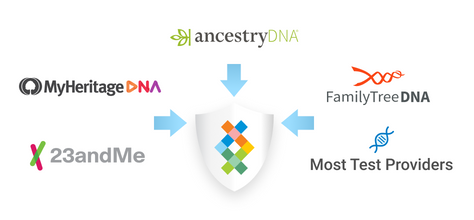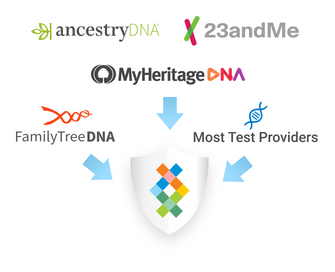DNA Analysis Reveals Identity of Jack the Ripper | Forensic DNA
The DNA profile of Jack the Ripper, one of history’s most notorious killers, has been obtained and his identify is now known! The murderer’s DNA was obtained from the shawl of the Ripper’s fourth victim, Catherine Eddowes, which occurred in 1888. The shawl, found next to the victim’s body, contained both blood and semen from the killer. Analysis of mitochondrial DNA from the shawl revealed the true identity of Jack the Ripper.

Who is Jack the Ripper?
DNA analysis provides evidence that Jack the Ripper’s true identity was Aaron Kosminski! At the time of the killings, Mr. Kosminski was a 23-year-old barber living in Hastings, London. He was also a prime police suspect in the killers during the initial investigation in 1888 and also by forensic investigators throughout history.
DNA Forensics Solves The Case
This new genetic analysis of Jack the Ripper’s DNA data was performed by Dr. Jari Louhelainen and Dr. David Miller, scientists at the University of Leeds in the United Kingdom and was published in the Journal of Forensic Sciences in March 2019.
The scientists sequenced the mitochondrial DNA from blood and semen found on the shawl of the Ripper’s fourth victim and compared the genetic sequence to DNA samples taken from living descendants of Catherine Eddowes (the victim) and Aaron Kosminski (a prime suspect).
The DNA matched that of Mr. Kosminski’s descendants, providing very strong evidence that the killer was Mr. Kosminski.
Below is a sketch of Aaron Kosminski aka Jack the Ripper.
Recent Updates On Genetic Testing To Identify Jack The Ripper
The DNA testing of a shawl related to Jack the Ripper’s identity first garnered significant attention in 2019 when a study published in Journal of Forensic Sciences matched DNA from the shawl to a descendant of Aaron Kosminski, a long-time suspect in the case. This finding reignited the theory that Kosminski might have been Jack the Ripper, though it faced criticism due to concerns about contamination and the limitations of the DNA analysis.
In October 2024, interest in the case resurfaced with the application of new DNA testing techniques. The shawl, reportedly found at the scene of one of the murders, was re-examined, leading some researchers to reaffirm that Kosminski—a Polish barber and one of the primary suspects—may indeed have been the killer.
The shawl, which contained blood and semen stains, was subjected to updated DNA testing. The blood was said to match a descendant of Catherine Eddowes, one of the Ripper’s victims, while the semen was traced to a distant relative of Kosminski. Although this discovery strengthens the case against Kosminski, it has not been without controversy. Experts have pointed out that the shawl might have been contaminated over the years, raising questions about the reliability of the DNA results. Additionally, doubts have been raised about the accuracy of the testing methods used.
This new evidence has spurred ongoing debate within the forensic and true crime communities, as the mystery of Jack the Ripper remains unsolved. Kosminski continues to be a leading suspect, but the scientific community has yet to reach a consensus on whether this DNA analysis is conclusive enough to definitively identify the killer.
The 2024 findings focus on the same shawl but employ more refined DNA matching techniques and additional genealogical data. However, the core concerns about contamination and the provenance of the shawl remain. As with the 2019 findings, this renewed examination has rekindled debate, but critics question whether the evidence is strong enough to conclusively solve the case.
Interesting in learning more?
A great summary of the forensic DNA sequencing study was published in the journal Science.
There are other great discoveries of famous historical figures and their DNA. For example, did you know that Jesus Christ’s DNA was possibly found on crucifixion nails? While we likely wouldn’t want to clone Jack the Ripper, would you want to clone Jesus?



